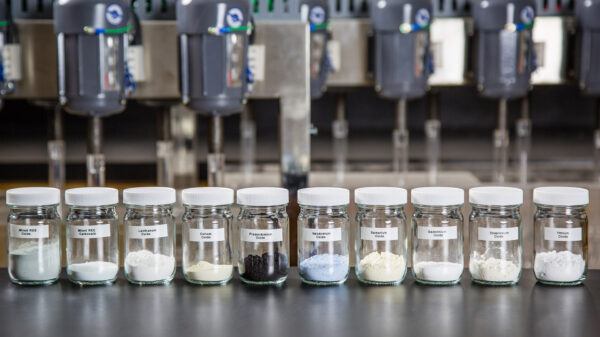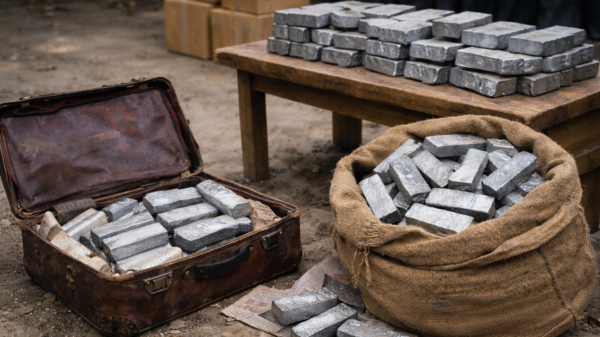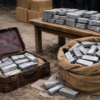China sharply cut exports of two key critical minerals in June, including antimony and germanium.
Asia Financial released on Monday that antimony shipments fell by 88 per cent, while germanium exports dropped by 95 per cent compared to January levels.
The steep decline reflects Beijing’s intensified crackdown on shipments and unauthorized exports, particularly through third countries such as Thailand and Mexico.
Chinese customs and national security officials stepped up enforcement in recent months. Authorities introduced new licensing rules to close loopholes and prevent banned material from leaving the country. In June, antimony exports totalled just 65 metric tons, and germanium dropped to 3.1 tons, Reuters reported.
Meanwhile, rare earth magnet exports to the United States surged. After clearing a backlog of delayed licenses, China shipped 353 tons to the U.S. in June, a 660 per cent increase from May. Total rare earth magnet exports climbed 157.5 per cent month over month to 3,188 tons. However, they remained 38 per cent below June 2024 levels. For the first half of 2025, exports reached 22,319 tons, marking an 18.9 per cent year on year decline.
Beijing’s strategy appears twofold. It is maintaining leverage by restricting chokepoint materials such as antimony and germanium. At the same time, it is easing rare earth magnet exports to reduce geopolitical tensions. Officials began tightening enforcement after discovering material routed through Southeast Asia and Mexico.
Prices responded sharply. Since May 2024, antimony prices have nearly quadrupled, while germanium prices have more than doubled. The rare earth rebound, however, may offer temporary relief to manufacturers across industries like electric vehicles and aerospace.
Read more: NevGold pulls up even more promising antimony grades from Nevada property
Read more: NevGold’s Nevada property may just be the next American antimony resource of scale
Both minerals are designated as critical by US and EU
Antimony and germanium are two critical minerals with essential roles in modern technology and national defense. Antimony is a lustrous gray metalloid commonly used as a flame retardant. Manufacturers often add it to plastics, textiles, and electronics to slow combustion. It also strengthens alloys, especially lead based ones used in batteries and ammunition. Additionally, the semiconductor industry uses high purity antimony in diodes and infrared detectors.
Germanium is a brittle, silver white metalloid with excellent semiconductor properties. It plays a vital role in fiber optics, infrared optics, and solar cells. The telecommunications industry relies on germanium for optical fibers that carry high speed data. Further, military systems use germanium based infrared lenses in night vision devices and thermal imaging cameras. Also, manufacturers incorporate germanium into solar panels used on satellites and other aerospace equipment.
Both minerals are designated as critical by the United States and European Union due to their strategic applications and limited domestic production. China dominates global supply for both elements. This dependence has raised concerns about supply security, especially during geopolitical tensions.
Antimony and germanium are not easily replaced. Their unique properties make them hard to replace without compromising performance. For instance, antimony’s flame retardant properties are more effective than many alternatives. Likewise, germanium’s clarity and heat resistance give it an edge in optics.
Read more: NevGold’s latest drill results extend priority target at Limo Butte by over 200 metres
Read more: NevGold’s latest Nevada drill results show exceptional gold mineralization
US government approved federal loan support
The U.S. has made significant efforts in recent months to secure alternative supplies of antimony and germanium and reduce its reliance on China. Through the FAST 41 initiative, the federal government streamlined permitting for critical mineral projects, reducing delays and encouraging investment. This policy shift allowed Perpetua Resources Corp (TSE: PPTA) (NASDAQ: PPTA) to advance its Stibnite gold antimony project in Idaho, which is expected to supply over 35 per cent of U.S. antimony demand.
Additionally, the US government has given federal loan support and prioritized strategic mineral supply chains. Perpetua secured substantial funding to develop its site, ensuring long term production of both gold and antimony. United States Antimony Corp (NYSEAMERICAN: UAMY) has also expanded operations, running the only antimony smelter in the country. It aims to increase output by processing stockpiled material and sourcing new feedstock from allied nations and domestic mines.
Another key player is Energy Fuels Inc (NYSEAMERICAN: UUUU), which is developing capabilities to process rare earths and critical minerals alongside its uranium operations. This diversification supports broader national goals to build strong mineral supply chains.
At the same time, gold focused juniors have turned toward antimony production to attract investor interest. NevGold Corp (CVE: NAU) (OTCMKTS: NAUFF) (FRA: 5E50), for example, identified high grade antimony zones at its Limousine Butte gold project in Nevada. The company now promotes the site as a dual purpose gold antimony play.
These developments reflect a growing trend among juniors to leverage antimony resources as demand surges and geopolitical risks involving China intensify.
.
NevGold Corp is a sponsor of Mugglehead news coverage
.











